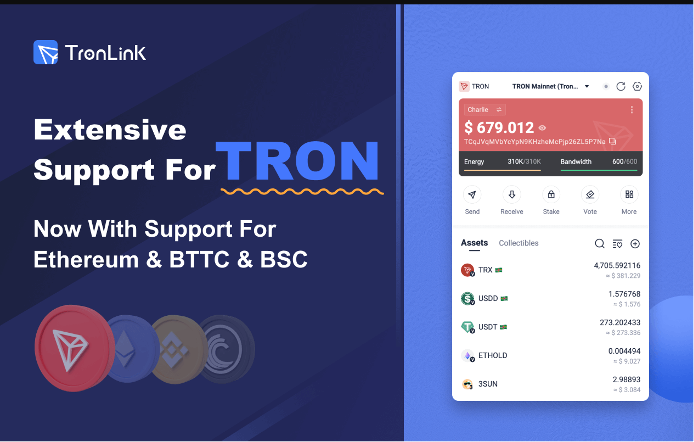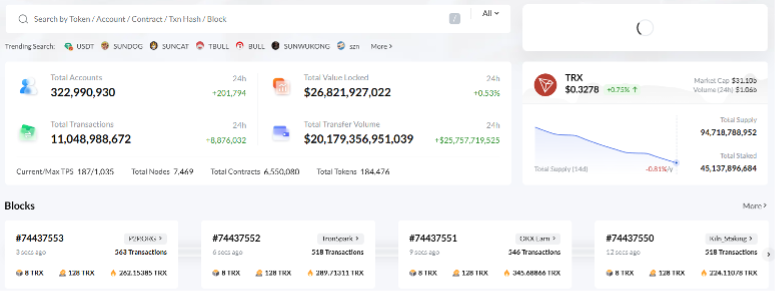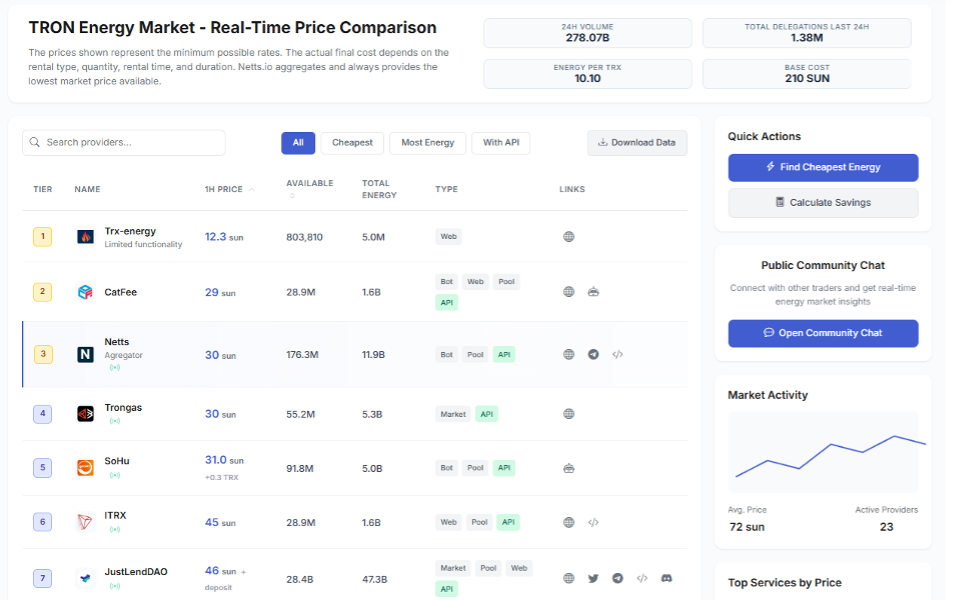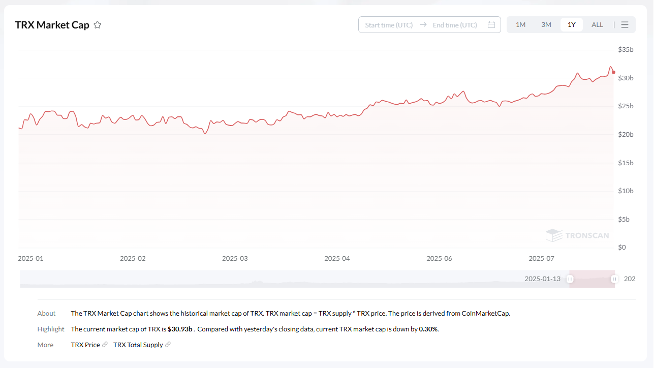Powered by its efficiency and low transaction costs resulting in it being the choice blockchain for Tether (USDT) transfers, the TRON network has secured a solid footing as a leader in the cryptocurrency landscape. From individual users sending USDT to their family, all the way to large scale enterprises conducting global business, daily USDT volume across the TRON network reaches billions of dollars. But naturally, as the network expands, so does the necessity to grasp the mechanics behind it to maintain smooth operations and, crucially, keep costs low.
Transaction fees come as a surprise for many users — especially those that are new to the ecosystem. They notice a transfer has failed because there was not enough "Energy" or a portion of their TRON (TRX) balance is "burned" to pay for the transaction. A deeper understanding of TRON's resource model can certainly help here. Welcome: in this article we are going to cover the must-have tools, explain what Energy and Bandwidth are all about and talk about game-changing approach called TRON Energy rental, which makes your blockchain transaction costs up to 90% cheaper! So, we wish to enable you so well that you can make your USDT transfers the most straightforward, at lowest cost and most smooth possible.
Foundation: Your Gateway to TRON Ecosystem
A wallet is a prerequisite for sending USDT or renting Energy, as they are required to interact with the TRON blockchain. It is your digital identity, it is your bank and the gateway into the decentralised world. And, again, a sober method to monitor your belongings and confirm transactions. Here are the foundational tools you will require.
TronLink: De-Facto Standard
It is the most familiar and frequently used wallet in the TRON ecosystem. It works just like MetaMask works for Ethereum, providing you with a seamless bridge between your browser and the TRON-based decentralized applications (DApps). TronLink is an essential browser extension available for Chrome, Firefox, and Edge and mobile app for iOS and Android.

You create or import a TRON address when you install TronLink. The wallet where you will keep your TRX, USDT and other TRC-20 or TRC-10 tokens. Its real power, however, is in its DApp browser and transaction signing UI. TronLink will pop up and ask you to perform a connection to your wallet when you go visit a platform to rent an Energy or visit a DEX. When doing any transaction like sending USDT or signing a contract to rent Energy, TronLink will show a very clear confirmation window with the transaction details. While everything is manual, you remain in control because every action that needs to be taken has to undergo some sort of approval before it gets done. Such non-custodial means that your funds are in your hands only you can read your private key.
Another Option: Trust Wallet — Multi-Chain Powerhouse
TronLink is TRON-specific whereas Trust Wallet is multi-chain experience with support for dozens of blockchains including TRON. Trust Wallet is a great option for users who use multiple crypto ecosystems. This means you can manage not only your TRON assets with it, but also all of your Bitcoin, Ethereum and many other tokens in one easy-to-use interface.
The mobile-first experience design of Trust Wallet is intuitive and user-friendly. Quickly deposit USDT (TRC-20) to your wallet, send and receive funds, check your trans-history. A DApp browser is build-in, so that you can connect directly to TRON Energy rental platforms right from your phone. Similar to TronLink, go to the DApp, connect wallet and approve transactions as they come up.
Tronscan: Your Go-To Blockchain Explorer
You can pick whatever wallet you prefer but Tronscan is the reality check. It offers a reliable and comprehensive overview of each transaction, address, block, and token on the blockchain acting as the official TRON network blockchain explorer. You can also paste a transaction hash or a wallet address and obtain tons of information.

Tronscan is extremely important for USDT transfers, as many USDT transfers cannot simply be managed through Tronscan for one reason or another.
Transaction verification: when you send USDT, your wallet will provide you with a transaction hash (TXID) which you can use to look it up on Tronscan. Here you can view the confirmations, the addresses of the sender and receiver, and the transaction confirmation status.
You can then check your current wallets balance of TRX and other tokens by searching your own wallet address under resource monitoring. Better yet, you can keep track of your Bandwidth as well as your Energy. This is crucial, because you need to know how many transactions you can handle and how much they will cost you. This will show you: your remaining Energy, how much you have earned over time from freezing TRX, and how much of it is consumed every time you perform a transaction.
For advanced users, Tronscan allows you to directly interact with smart contracts, giving you a higher level of control over your on-chain activities.
Having these three tools at your disposal — a main wallet such as TronLink or Trust Wallet, and the Tronscan explorer — sets the stage for everything else. They may be used to navigate safely through the TRON network, like your dashboard and control panel.
TRON Resources - Bandwidth & Energy Explained
TRON provides very high throughput and low fee services due to its unique resource model based on two primary components: Bandwidth and Energy. One way to start optimizing your transaction costs is to understand how they function.
TRON provides a total of 600 Bandwidth Points for free to each account on the network every 24 hours. Most types of transactions are going to consume some bandwidth such as simple TRX transfer, voting for SR and stake as seen on the image above. This daily allowance is generally enough for the common user. If you want more, you obtain it by freezing some TRX.
On the contrary, Energy is a more niche resource that is used only to execute smart contracts. Because USDT on TRON is a TRC-20 token (a smart contract), every USDT transfer needs Energy. This is what is called a fee you pay for the work done by the network to get your transaction processed. In the case you do not reserve enough Energy, the network will burn TRX from your account. This is where hidden charges originate, and it is always one of the costliest methods.
For a USDT transfer to the same address that has received USDT before, by mid-2025, it now costs 65,000 Energy. For a transfer to a fresh address that has never held USDT before, it is more: ~131,000 Energy (as the network must perform an additional operation to initialize the USDT contract for that address).
So, how do you get Energy? You have two options:
1. Freeze TRX. You can "freeze" or stake your own TRX to get Energy. Freezing TRX commits your TRX for a minimum of 72 hours. That later, generates a daily amount of Energy for your account. Though this method provides you with an Energy source that pays for itself, it demands a high up-front investment. So, a single or 2 daily transactions might require you to freeze thousands of TRX just to generate enough Energy.
2. Rent Energy. This is simply a game-changer that how the experience of user has changed on TRON. As opposed to putting your own capital into escrow, if you want to use Energy just pay a small fee to rent it from someone else who has a huge amount of TRX frozen. This is the basic logic that runs the rental service of Tron Energy.
The renting of Energy is much cheaper and flexible for values of TRX than freezing your own TRX for most users. It converts a huge CAPEX into a small and predictable OPEX.
Contemporary Way of Renting TRON Energy
After the idea to lease Energy on Tron blockchain, the competitive market of providers has appeared. These platforms, known as Energy markets or rental services, serve as intermediaries. They collect large sums of frozen TRX, that is stuck as votes, from investors and hand out the equivalent amount of Energy (using the Energy from TRX frozen) to users that need it for a fixed period of time (from an hour to a month).
The benefits are immense. So instead of incinerating 27 TRX for a 131,000 Energy transaction, you could pay 5-6 TRX to rent the same amount of Energy. The savings can be astronomical for businesses and active traders who do dozens or hundreds of transactions each day. This is precisely why the Tron Energy rental ecosystem has become an integral part of the modern TRON experience.
But when you have two dozen providers fighting over your business, how do you secure the best price? This is where an aggregator becomes your best friend.
How Netts.io Aggregator Can Make Your Way through the Market
An aggregator does not sell Energy directly: it real-time tests the whole market and gives you a comparison of all providers. netts.io as of now is TRON ecosystem's largest Energy rental aggregator where you can find the cheapest most reliable Energy in one place.

Through the Netts Energy Market, you can find an up-to-date list of providers, current pricing, amount of Energy available and other information about your key suppliers. This transparent pricing model means you will always get the lowest rate available in a given market. EJ: The market is currently incredibly thriving: almost 1.3 million delegations are being exchanged and 273 billion Energy units are being exchanged in a 24 hours period based on data from July 2025.
These are some of the highlighted platforms that you will find on the netts.io. They each have unique characteristics:
- Trx-Energy & CatFee. Some of the cheapest providers with quick and small rentals for users looking to get the lowest end quote possible. They have a very no-nonsense approach and are a cheaper solution.
- Trongas & SoHu. Out of some of the bigger market players who are well-known for their reliability and large Energy pools It typically includes APIs that developers and owners looking to automate Energy purchases could use.
- JustLendDAO. Being one of TRON's top DeFi protocols, JustLendDAO provides Energy rental as well. Its model is somewhat different (and sometimes requires a deposit) but it has a huge Energy reserve and is extremely reliable for very large orders.
- Token Goodies & ITRX. A combination of Market, Pool and Web rentals, allowing different types of user behaviour ranging between manual web rentals through to complete automated API integrations.
- Feee.io. A leading and well-known vendor in the space. Feee.io is an all-in-one service with a fast website, a convenient bot in Telegram and a solid API. The Energy pool it manages is big, boasts reliability and competitively prices its Energy, which means it is a go-to for individual users as well as businesses that depend on a steady supply. The notable expansion of being present across different interfaces including market, bot and web indicates the commitment towards accessibility.
- TronSave. This service takes a unique angle by implementing an Energy rental directly into a wallet service to make the process of renting Energy easier for its users and offers an all-in-one solution.
The netts.io aggregator itself is also a premium service with some of the best rates on the market and some advanced features such as a very efficient Telegram Energy Bot. This bot also enables for the automated Energy management and accounts for a low minimum deposit. It can automatically handle your Energy requirements, even giving out a bit TRX for Bandwidth if required and also support to manage multiple wallets at a time as well.
An Example: Get Energy to Transfer USDT
And now let us finally combine it all together. Let P2P transfer use rented Energy for cheap USDT transfer tutorial step by step methods.
1. Firstly, make sure to have some USDT in your desired wallet (e.g., TronLink) and also TRX available in this wallet such as 10-20 TRX to cover the rental fee and the possible Bandwidth cost.
2. Next, navigate to the netts.io Energy Market to identify the best rental price and follow the chosen link.
3. After that, fill in the amount of Energy that you require at chosen service. So, you can be relatively confident that a standard transfer should be safe, for new and existing addresses, at 65,000 Energy. That form will then calculate the price in TRX for you based on the current market price. Choose an expiry time, one hour is usually sufficient for a single deal.
4. Once you OK the details, immediately a window will prompt on TronLink asking you to sign the transaction for the rental payment. When you have approved it, the Energy will be transferred to your address in less than a second. You can confirm this by looking up your address on Tronscan and seeing your Energy nearly tripled.
5. Now that you have rented Energy in your account, you can simply send your USDT as you normally would. Open your wallet for the USDT transfer, and when you approve the transaction in TronLink, the fee will show as "0 TRX" Instead, this transaction will eat your Energy that you just rented instead of burning your TRX balance. What you get is a transaction that costs a few percent less at the price of a few additional clicks,
Final Thoughts: A More Efficient Future of TRON
Energy and Bandwidth framework suggest efficiency and scalability. This all may seem convoluted at first, but the tools/services that have sprung up around this system have made using it extremely easy. Secure access is granted by wallets such as TronLink and Trust Wallet, transparency is assured by Tronscan and for those clued up on the extensive ecosystem of Tron Energy rental services, transaction costs are now imperceptible.

On top of that, you can use an aggregator to slice through the commotion and obtain the lowest possible cost to execute your transactions right away. In 2025, whether you are an individual doing a one-off payment or a business doing thousands of transactions, know how to rent Energy, is no longer a party trick for the pros, but an essential skill for everyone operating on TRON. We are not going to burn TRX with high fees anymore for no reason. That future belongs to intelligent, efficient and nearly-zero cost transactions.
